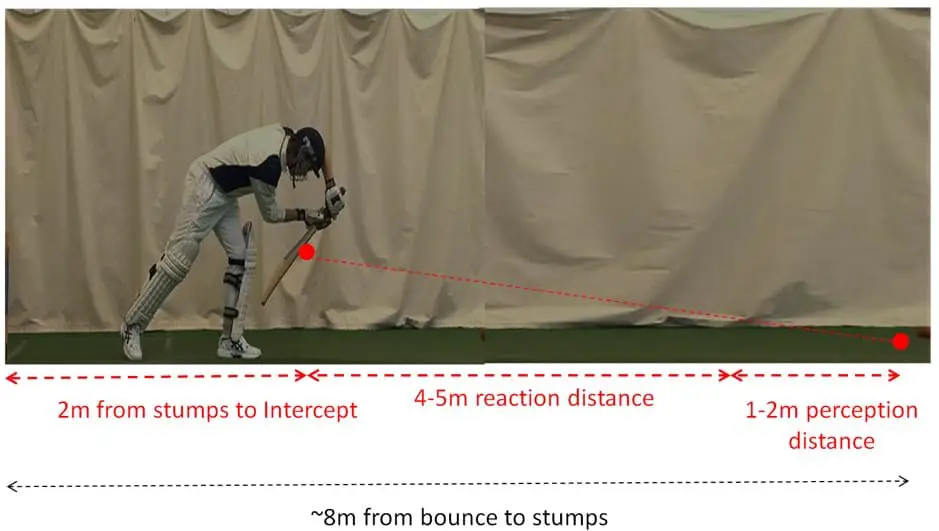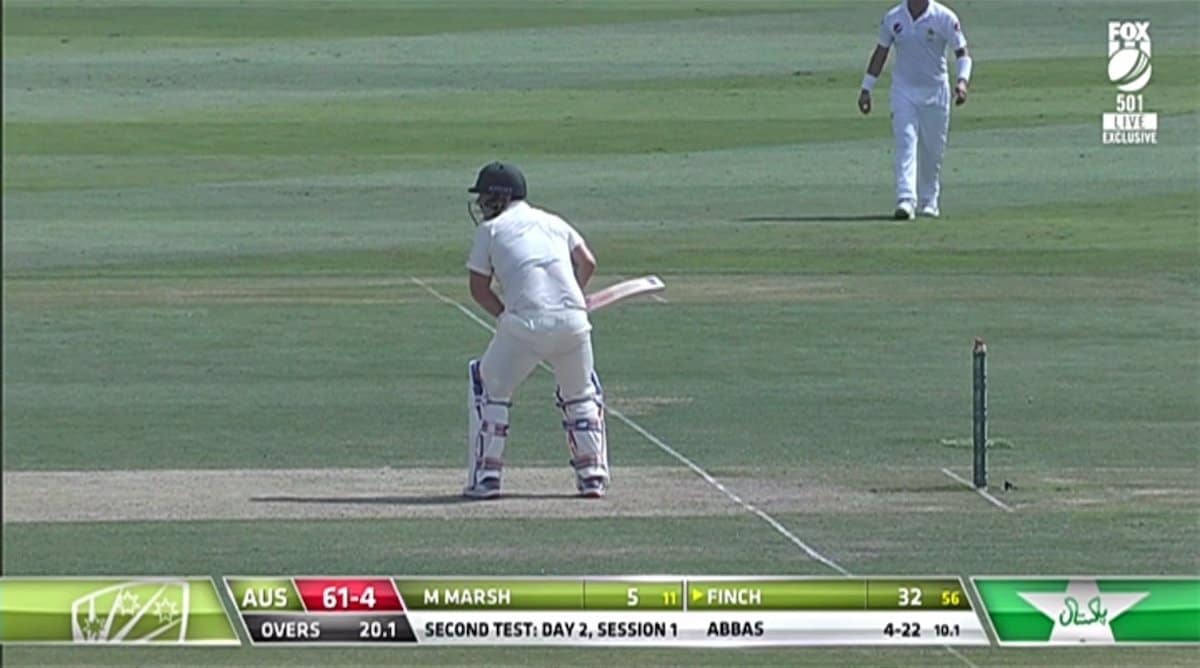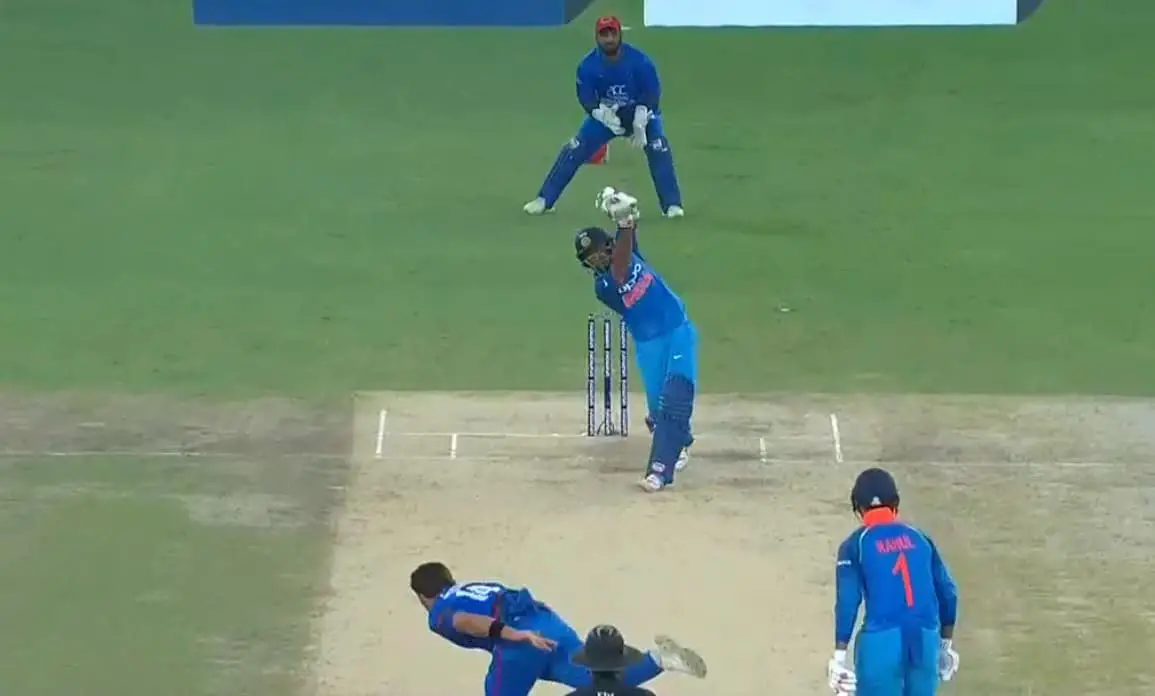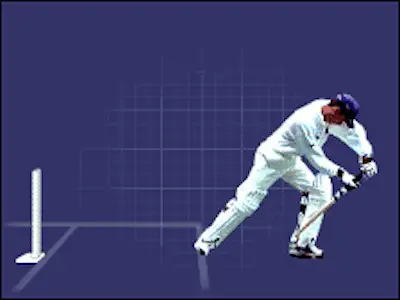
So often we hear the commentators talk about the number of deliveries that pitched in the Good Length area and how it troubled the batsman! The hallmark of a good batsman is how he tackles the balls bowled around that probing good length area. So, how should you play a good length ball in cricket?
The best way to play a good length delivery successfully in cricket is to judge the line and length of the ball early, wait for the ball to arrive, and then play a defensive shot. Playing a correct shot, and knowing when to leave the ball also play a key role in effectively playing a good length ball.
But, there is a lot more that goes into successfully playing a good length delivery in Cricket. After all, if you need to play long innings as a batsman, you need to master this skill!
So, in this article, we’ll share with you everything there is know about how to play the good length balls. Plus, we’ll also share 10 really useful tips that will not only improve your response to good length balls but also help you master it!

What is a Good Length Ball in Cricket?
The success of a bowler depends on the line and the length at which he bowls.
The line of the ball is the direction of the ball in accordance with the batsman’s stumps. Similarly, the length of the ball is the distance between the spot where the ball is pithed and the stumps.
So, the length of the ball is the distance from the spot from where the ball bounces towards the batsman.

For fast bowlers, the “good length ball” is usually the ball that is pitched between 6 to 8 meters from the stumps, and for the spinners, the good length is usually between 3 to 4 meters.
The exact good length may vary slightly according to the bounce in the pitch, the weather conditions, the height, and the playing style of the batsman.
If bounced at the right area as mentioned above, it is called the good length delivery irrespective of the line of the ball.
Why are Good Length Balls Difficult to Deal with as a Batsman?
There is a “good” reason for labeling the balls pitched between 6-8 meters as “good length” balls. Such balls cause enough dilemma in the batsman’s mind about whether to go for a front foot shot or a back-foot shot. And a slight delay in the decision making could lead to an error in the shot selection and its execution.
The length of a delivery dictates two elements.
- The height of the ball when it reaches the batsman.
- Amount of time the batsman can get to react to the ball after the bounce.
These two parameters cause enough trouble for the batsman before going for the shot, creating opportunities for the bowlers.

The batsman usually receives a good length ball around his knee height, but in case of a bouncy surface or the ball is bowled at a higher speed, the actual bounce could be higher than expected.
Now, allow me to explain from the technical perspective. Delivery from an average fast bowler travels at about 32 meters per second after the bounce.
The fastest recorded human reaction is 120 milliseconds (.12 seconds), however, the average response time for the top batmen is between 120-180 milliseconds (0.18 seconds).
This means in order to see and react to the ball well (even in 180 milliseconds), the batsman would need the ball to travel approximately 6 meters before reaching him.
If the batsman is on the front foot, his interception point is around 2m from the stumps, and in that case, the minimum length at which he can start to react is about 8 meters or more.
But if the ball is pitched within 6-8 meters, the batsman doesn’t get enough time to react.
Tips to Play the Good Length Ball Effectively
Now that we know why good length balls are difficult to play, let’s see how to tackle such deliveries. Let me spill the bins now with these 10 helpful tips.
Tip 1 – Know What kind of Shots you can Play against Good Length Deliveries
You need to be very careful about the kind of shots you choose while facing a good length ball.
So, the first tip for you is to avoid shots with horizontal bats as far as possible. You can play shots with a vertical bat and push the ball in the “v”. The shots like straight-drive, on-drive, or off-drive can be handy.
With this tactic, you can always push the ball into the gaps to steal some quick runs.
Tip 2 – Watch the Point of Release of the Ball (to Judge the Length of the Ball)
When you already know the length of the ball, half the battle is won. If you already know that the approaching delivery is going to be pitched at a good length area, you get additional time to make your decision rather than judging its length after the bounce.
You can judge the length of the ball by watching the point of release of the ball from the bowler’s hand.
For the full-length balls, the bowler has to release the ball early, that is, at the first point of release. Each subsequent delay in the release would shorten the length, while the bouncer is bowled with the last point of release.
So, be prepared for the fuller deliveries, and if the bowler skips that point of release, your mind needs to be active and be prepared for shorter length balls with each fraction of delay.
To judge the ball correctly, keep your head still, with eyes at an appropriate level to observe the point of release. If the head is tilted even slightly, you might end up misjudging the length as well as the line of the ball.
Tip 3 – Judge the Line of the Ball (Some Balls are better Left Alone!)
Just like judging the length of the ball, observing the bowler is again the key to judge the line of the ball.
Closely looking at the bowler’s wrist and evaluating its position with respect to the crease can be helpful to know the line. If a fast bowler tilts his wrist at the time of release, the ball will take the direction (the line of the ball) as per the tilt.
For instance, when Mitchell Starc’s wrist tilts towards the off side of the right-hander, you can be somewhat sure that the ball may swing away, and leaving such balls would always be a better option.
Glenn McGrath’s close-to-the-stumps action meant a well-defined line around the off stump. An off-spinner may come close to the stumps to deliver a top-spin.
Again, the stance and the steady head position remain the key to correctly judging the line of the ball. Earlier Rohit Sharma’s head would fall over slightly, so he used to chase the balls that should have been left alone due to the misjudgment.
Tip 4 – Wait till the Last Moment to Play the Shot (Try Not to Pre-meditate)
For a batsman, it’s extremely difficult to judge the height of the ball, when it rises from the good length area. This is because the height would vary depending on the nature of the pitch, the bounce it offers, and the pace generated by the bowler.
Hence, if you make a decision to go for a pull or a cut shot, and receive a good length ball, it will lead you into deep trouble, as you have less margin of error in case of the horizontal position of the bat.
If the ball keeps low and it’s in line with the stumps, it can be a disaster; and if the ball bounces more than expected due to the hard surface then you may just edge the ball up in the air for anyone to grab. A better solution is to wait for the ball till the last moment and play according to its actual length and height.
Tip 5 – Alter the Batting Position to Alter the Length of the Ball
While you cannot control the actual length of the ball, you can nullify the effect of the good length ball by altering the spot of your stance, by either standing deep inside the crease or slightly out of the crease.
Many professional batsmen follow this approach, and it is a very simple tip to follow. This tactic is very effective against medium pacers.

When you stand outside the crease, you position yourself a little closer to the pitch of the ball, therefore transforming a good length delivery into a slightly fuller length delivery.
You will find it easier to drive such deliveries. Also, it is harder for the umpire to give you out LBW when you stand away from the stumps. Of course, you cannot use this tactic when the wicketkeeper is brought up to the stumps.
Staying deep inside the crease can open up a few horizontal bat shots for you. This tactic is adopted more when the batsman plans to go for big shots or target shorter boundaries on either side.
Tip 6 – Be Ready and Commit to Play
Imagine you are at the striker’s end, facing a fast delivery that is bounced at a good length. If you are not ready or did not anticipate the length, your wrong foot movement will lead you to trouble.
Due to the dilemma caused by the good length balls, batsmen, who were not prepared or expected the good length delivery, often fail to offer any kind of foot movement.
So, I recommend you to be mentally prepared for the good length balls. It will help you to make the right decision and positively respond in fractions of a second.
In my opinion, you should be looking to get forward to all the good length deliveries. How will it work? Well, generally there isn’t really any need to play good length balls off the back foot unless you are playing on a bouncy pitch or if you are not that tall.
So, showing some intent early and moving your front foot towards the pitch of the ball will eliminate the dilemma part, and you can offer a better response to the good length ball.
Tip 7 – Put Pressure on the Bowler (Try Advancing Down the Pitch)
This particular tip could be useful to you in some scenarios, where you know the bowlers are regularly bowling at the good-length area.
Advancing down the pitch may disturb the bowler at the time of the release of the ball. Also, you will face a lot of fuller ball than what was intended by the bowler due to your advances.
Next time, the bowler will try different lengths to stop you from charging down. Batsmen in the past adopted such tactic against the great length bowlers like McGrath to somehow disrupt their rhythm.

That said, follow this tip with some caution. Have your stumps covered while charging down by moving straight towards the bowler. Also, don’t take beyond 2-3 steps. Needless to say, your head and eyes should be still and at the same level all times. If you practice it in nets it may help you big time.
Tip 8 – Play According to the Game Situation
You should assess the situation of the game before deciding your approach towards good length deliveries. You may attack or play defensively as per the situation.
Play Out the Deliveries
When you just arrive at the crease, and you have plenty of time, there is no need to go for attacking shots on good length balls. That’s the time when as a batsman you would want to settle down, understand the pitch, its pace, and bounce.
Playing out the balls will be more beneficial in such scenarios. You should also use softer hands instead of trying to push the ball early on. It will help in case you edge the ball or mistime it, as the ball will not carry to a fielder.
Flash Hard
In cricket, flash hard means to throw all your power behind the ball while playing a shot. When you are in a situation where you must make quick runs, you can’t go softer at any delivery, even if you are just new to the crease.
With the “flash hard” tactic, if you connect well you can get maximum runs, and even if you mistime or edge the ball, there is a good chance that it will go over the fielder or past the fielder.
Tip 9 – Work on a Solid Defence Technique
With the right technique, you can fend any kind of balls, be it a bouncer or a good length ball. Hence, a batsman must work on strengthening its batting defense techniques, as that’s what is going to help him in the longer run.
Earlier in this article (Tip 6), you read how moving your foot forward towards the pitch of the ball helps. So, I recommend you practice forward defensive shots while working on your defense.
The principle of a forward defensive stroke is to block the ball rather than to score runs. Below mentioned steps will help you understand and practice the forward defensive shot.
Step 1 – The Forward Stride
Move your front foot towards the pitch of the ball. The stride should not be too big, you should be comfortable with the stride and remain steady. Get your head near your knee. The back leg should remain straight.
Step 2 – Bring the Bat Down
Bring the bat down with the forward swing. Make contact with the ball with the face of the bat. Angle the face of the bat slightly downwards towards the ground. Don’t leave too much gap between the bat and the pad.
Step 3: Finishing Position (No Follow-through)
Avoid the follow-through after the contact. Raise the heel of your back foot and hold your finishing position.
Tip 10 – Practice as much as You Can!

Last but not the least, I strongly recommend you to practice as much as you can to master the good-length balls.
To perfect your skills, practicing them in nets is a must. You can ask your fellow bowlers to bowl at good lengths repeatedly in the nets. It would be incredibly helpful to practice in the nets with a bowling machine. You can adjust the settings of the machine for a particular line and length and keep practicing the good length balls.
Final Thoughts
In cricket, the good length area is one of the key weapons for bowlers. Good length deliveries can frustrate any batsman, and worst, can get him out.
I hope, with this article, you as a batsman got detailed knowledge about the good length balls and the tactics to tackle such deliveries. Follow the tactics, be prepared, practice the good length balls, and trouble bowlers. Let’s turn the table, now. Shall we?
Featured Image Credit – The image used in the featured image of this post was provided by welshmackem and is licensed with CC BY-NC-SA 2.0. To view a copy of this license, visit https://creativecommons.org/licenses/by-nc-sa/2.0/




